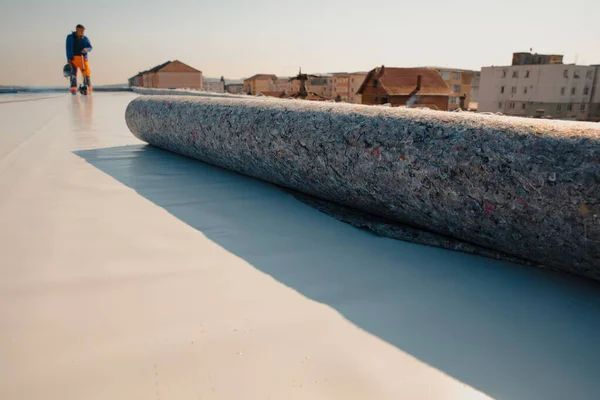Having a roof over your head does a lot more than just shield you from the sun. A roof that is badly constructed will deteriorate in the heat, eventually splitting and falling apart. In addition to this, it conducts the heat of the sun straight into the house via the surface itself. Because of this process, some materials are much less energy-efficient than others, which in turn pushes up the price of the energy used for house cooling.
On the other hand, some roofing materials not only hold up well under the intense heat but also allow for adequate ventilation and airflow between the decking and the roofing material, ensuring that the interiors of the homes they cover are kept at a more comfortable temperature than they would be with asphalt shingles. It is possible to keep houses as cold as cucumbers by using materials that either make it much more difficult for heat to pass or reflect sunlight off the roof. Naturally, many hot-weather materials each have their benefits as well as their drawbacks to consider. A guide to the most common roofing materials for use in hot climates is presented here in order to assist you in weighing the many factors of the decision.
Roofs Made of Ceramic and Terra-Cotta Tiles
There is a reason why this roofing material is so popular across the Southwest, and it has little to do with its look. However, terra-cotta does make an ideal option for those who are trying to capture a bit of Spanish colonial design in their home, so keep that in mind. Terra cotta is an Italian phrase that literally means “baked earth,” and the weather-resistant qualities of these tiles are due to the baking process that takes place in a kiln at high temperatures. In point of fact, it has been known for ages that clay tiles can withstand the heat, and they typically have a lifespan of at least 50 years on average.
The curved design of the tiles makes a difference as well since it enables air to move under the surface, which helps to keep roofs and interiors cooler. The main limitations of this fashionable and environmentally friendly option are the weight of the tiles and the expenses of the materials. Because asphalt roofs are often significantly lighter in weight than clay tiles, many homeowners discover that they need to have their asphalt roofs strengthened before they can put terra-cotta on their houses. In addition, they are one of the most pricey materials since they range from around $700.00 to $1000.00 per square (that’s 100 square feet if you’re not familiar with the terminology used in the roofing industry). Nevertheless, taking into account the fact that they have a lengthy lifetime, you could just break even on the original outlay.
Roofs made of concrete slabs and concrete tiles
Concrete is an excellent choice for those individuals who like the thermal capabilities possessed by terra-cotta but are concerned about the cost of purchasing it. Because of its thickness, this material takes a longer time to heat up in the sun, and as a result, it takes a longer time to absorb that heat and bring it back into your house. For roofs that are exposed to hot weather, slab concrete is an option that is both inexpensive and hefty.
However, roofing suppliers also produce more visually attractive concrete tiles that are dyed to give them a touch of color. These tiles are sold as an alternative to colored concrete shingles. S-tiles are one of the solutions that are considered to be among the most energy-efficient kinds available today. They are fashioned into a wave pattern, much as many terra-cotta tiles are, which enhances airflow between the decking and the roof surface. This is done in the same manner as other terra-cotta tiles. The net result of this is a reduction in the amount of heat transferred as well as the expenditures associated with cooling the building.
Roofing Membranes Made of EPDM
EPDM membranes, which are often referred to as rubber roofing, are not really made of rubber at all; rather, they are made of a synthetic material that is similar to rubber and is known as ethylene propylene diene monomer. Because of its composition, EPDM is very robust even when subjected to harsh circumstances. It has been shown in field testing that it is resistant to UV light without cracking or breaking down. In addition, it has a minimal energy overhead throughout production, which has earned it a lot of acclaim in life-cycle assessments. When coated with titanium dioxide, which gives EPDM a lighter color, the material is very excellent at reducing heat. This coating also makes the material lighter in color.
This hue allows light and heat to be reflected back into the environment from the surface of the roof. However, homeowners should exercise caution when using strategies such as “cool roofs” in an attempt to lower their overall energy use. According to the findings of several studies, using this strategy could have some unintended and perhaps harmful consequences for the ecosystem as a whole. For example, researchers from Arizona State University who evaluated the long-term impacts of cool roofs found that there was a 4% drop in local rainfall. You should give some consideration to it before moving forward with this option.
Metal Roofs
These days, fashionable cities with warm climates like Austin and Los Angeles favor the use of metal as the material of choice for their roofs. The history of metal roofing is marked by both high points and low points. Metal has been used since the time of Ancient Rome, but in the 1980s and 1990s, it was seen as a low-quality, tacky material that should only be used for agricultural buildings like barns and farms. This led to a negative public perception of metal. In spite of this, the use of this adaptable and long-lasting material has been experiencing something of a rebirth in recent years. According to research conducted in the construction sector in 2016, metal currently accounts for 11 percent of the market share in the roofing business, making it the second most popular material after asphalt. This change in perspective may, at least in part, be attributed to the material’s inherent sustainability.
Roofing products made of copper, steel, and aluminum are usually produced from recycled materials which has a natural appeal for environmentally conscious homeowners. Copper roofing products are also frequently manufactured from recycled materials. Having said that, there is more to it than that. Aluminum roofing systems that are designed to maximize energy efficiency often include an air gap between the metal panels and the decking in regions of the country with warm summers and high energy costs due to the cost of air conditioning. This “dead” area serves as a thermal barrier, preventing heat from the roof from being transferred down into the internal spaces below. It has been stated that the use of this invention has resulted in a reduction of cooling expenses of up to 20 percent in certain instances.
Green or “Living” Roofs
A roof that is covered with moss and plants may seem like something out of The Hobbit, but strangely enough, in addition to its aesthetic appeal, it also offers a lot of value from a functional standpoint. Green roofs, which actually consist of plant life draped over a waterproof membrane, offer the advantage of both reducing heat absorption and heat loss, making them a good alternative for both warm and cooler areas. Because of these benefits, green roofs are becoming an increasingly popular choice. In addition to this, they mitigate what is known in the scientific world as the “heat island effect,” which refers to the rise in temperature that occurs in metropolitan areas as a direct consequence of the sun’s heating of asphalt and metal surfaces.
In the same vein, they provide the essential oxygen that is missing from the atmosphere, which makes them an invaluable asset in highly crowded and congested locations despite the fact that this kind of roofing is surely not the most common roofing material. However, the notion is gaining favor among ecologically conscious homeowners in hot-weather locations.




